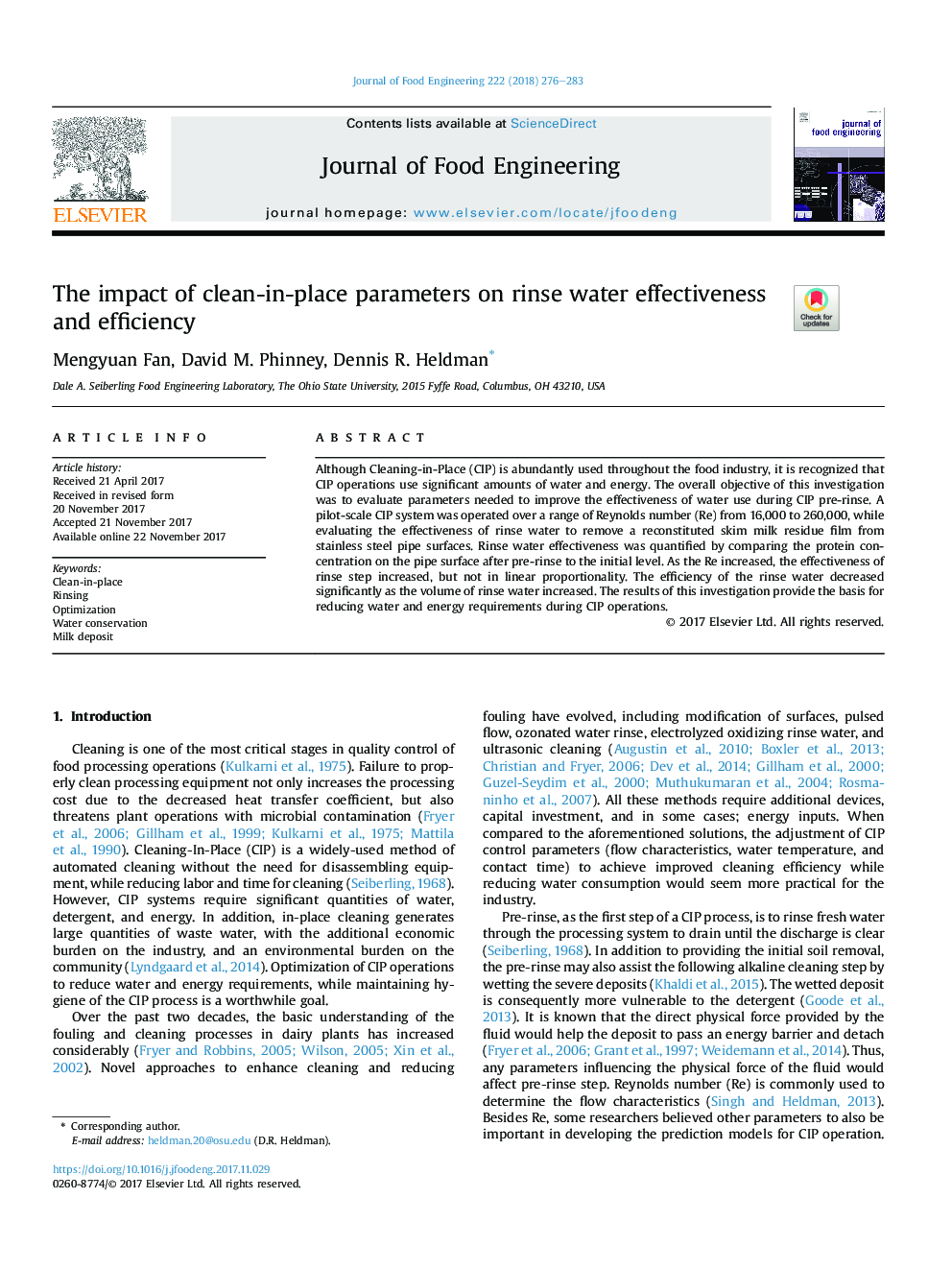| Article ID | Journal | Published Year | Pages | File Type |
|---|---|---|---|---|
| 6664787 | Journal of Food Engineering | 2018 | 8 Pages |
Abstract
Although Cleaning-in-Place (CIP) is abundantly used throughout the food industry, it is recognized that CIP operations use significant amounts of water and energy. The overall objective of this investigation was to evaluate parameters needed to improve the effectiveness of water use during CIP pre-rinse. A pilot-scale CIP system was operated over a range of Reynolds number (Re) from 16,000 to 260,000, while evaluating the effectiveness of rinse water to remove a reconstituted skim milk residue film from stainless steel pipe surfaces. Rinse water effectiveness was quantified by comparing the protein concentration on the pipe surface after pre-rinse to the initial level. As the Re increased, the effectiveness of rinse step increased, but not in linear proportionality. The efficiency of the rinse water decreased significantly as the volume of rinse water increased. The results of this investigation provide the basis for reducing water and energy requirements during CIP operations.
Related Topics
Physical Sciences and Engineering
Chemical Engineering
Chemical Engineering (General)
Authors
Mengyuan Fan, David M. Phinney, Dennis R. Heldman,
